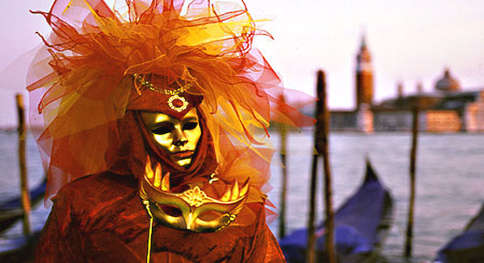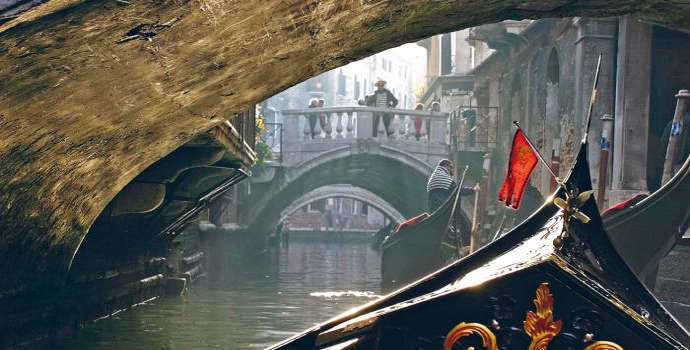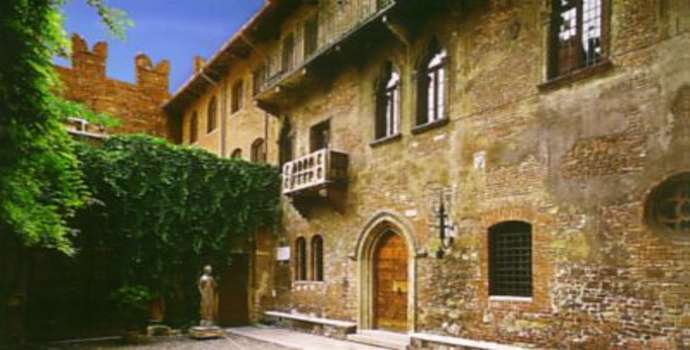|
:: ::
| I Viaggi Del Gusto UNDER THE TUSCAN SUN |
|
 VENETO HIGHLITHS VENETO HIGHLITHS
- PADUA AND THE SCROVEGNI CHAPEL
- THE BRENTA VILLAS BY BOAT
- VERONA ALONG THE LOVE TRAIL
- VENICE THE DOGE'S CHARM
- ALONG THE WINE ROAD OF VENETO
-
|
LIST OF PRIVATE GUIDED TOURS : VENETO AS YOU WANT
|
|
|
VENETO LANDS OF WATHER AND WINES FROM LAGUNE TO DOLOMITES CROSSING PRECIOUS VINEYARDS
Do you like traveling to visit what have become famous for their uniqueness?
Do you love to make real what you imagined to be?
You are looking for all the experiences to make the memory memorable
.. FOLLOW THE DREAM and WE GUIDE YOU IN THE EXPERIENCE THAT YOU ONLY CANNOT LIVE !!!
|
CONTACT OUR EMOTIONS' SAILOR
|
VISIT VENETO
|
|
_________________
VISIT VENETO
_________________
EXPERIENCES
VENICE
VENICE: THE SENSUAL CITY [......]
_________________
PADUA
EXPERIENCES
PADUA AND THE LOVE "LORD LANDS" [......]
_________________
VERONA
EXPERIENCES
VERONA AND THE LOVE LAND OF AMARONE WINE [......]
_________________
VALPOLICELLA
Authentic Luxury of Amarone Aromas
_________________
TREVISO
EXPERIENCES
TREVISO THE PROSECCO SPARKLING LANDS [......]
_________________
|
|
MAIN CITIES
VENECE THE CAPITAL

Venezia è la città magica per eccellenza, uno dei palcoscenici più straordinari dove la storia e l'arte si riflettono nelle acque tranquille della Laguna. Qui tutto è romanticismo, poesia, malinconia..Talmente tanto si è scritto di Venezia che pare superfluo ricordare che è una città unica al mondo, e che è stata giustamente posta dall'UNESCO tra i patrimoni dell'umanità non solo per le sue ricchezze artistiche, ma anche per la straordinaria compenetrazione tra attività dell'uomo e paesaggio naturale delle lagune. Un unicum, dunque, il cui destino è stato sempre legato all'acqua: quella della laguna e quella del mare. Ogni isola è stata strappata alla sua forza devastante e occulta e l'ambiente, inizialmente ostile, venne compreso, rispettato e modellato con giudizio. Grazie al mare i veneziani hanno sopperito alla mancanza di terre coltivabili, di materie prime, e la flotta nata come strumento di sussistenza si è trasformata in fonte di potenza e ricchezza. Il colore dell'acqua, la sua capacità di riflettere il cielo, le facciate dei palazzi affrescati dai Mayri pittori dell'epoca, Tiziano, Bellini, Giorgione... il colore veneziano che nasce dall'acqua e diviene una peculiarità da contrapporre al disegno fiorentino: anche nell'arte il destino della città legato a quello del suo ambiente. La stessa architettura riprende i temi del mare: le carene delle navi vengono riprese nelle sommità delle chiese, le decorazioni a tortiglione che abbelliscono i portali gotici, i marmi e le statue che adornano su palazzi e case, tutto qui racconta di lontane basi marittime, di proficui commerci, di guerre. Oggi, le pietre di Venezia sono lì come un immenso libro che racconta una grande storia. Per capire a fondo questa città occorre abbandonare i tradizionali percorsi turistici, perdersi in quel labirinto in cui terra e acqua si intrecciano e si fondono continuamente. Perché in ogni stagione Venezia assicura emozionanti incantesimi. E la notte, in quel silenzio misterioso che solo qui è possibile, la città diventa ancora più straordinaria e sognante, lasciandoci il tempo di abbandonarci al romanticismo, alla poesia e alla malinconia
VERONA OF SHAKESPEARE

Venice is a magical city par excellence, one of the most scenic and extraordinary where history and art reflect in the peaceful water of the Lagoon. Here there is romance, poetry, and melancholy... So much has been written about Venice that it seems superfluous to remember that this is one of the most unique cities in the world. It has justifiably been named by UNESCO as being a site of important human heritage not only for its artistic wealth, but also for its extraordinary co-existence of the activity of mankind and its natural situation on the Lagoon.
A unique specimen, therefore, as its destiny has been forever linked to water: that of the lagoon and the sea. Every island has been wrenched apart by the water's devastating and hidden force and the initially hostile environment has since been taken into account, respected and modelled judiciously. Thanks to the sea, Venetians have made up for the lack of cultivable land and raw materials with the fleet, born as a means of subsistence, has been transformed into a source of power and wealth. The colour of the water, its ability to reflect the sky, the façade of frescoed palaces by the best artists of the period, Tiziano, Bellini, Giorgione... the Venetian colour that is born from the water and takes on a special element from superimposing Florentine design. It seems that even in art, the city was destined to be linked to its environment. The architecture also takes the sea as its theme: the hulls of boats are copied in the roofs of the churches, the spiral adornments that embellish the Gothic portals, the marble and statues that adorn palaces and houses, all of this retells the past maritime foundations, of prolific commerce and war. Today the stones of Venice are like an open book that tells a great history. To understand the city in greater depth, it is essential to leave the traditional torist routes and to lose onself in the labyrinth of land and water that continually meet and deepen. Venice guarantees emotional enchantment all year round. In the evenings, in that mysterious silence that is only possible in Venice, the city becomes even more extraordinary and dreamlike, leaving us time to abandon ourselves to romance, poetry, and melancholy...
PADOA "LA DOTTA"
Erudite Padua. Its University, one of the oldest in Europe, had the exceptional professor, Galileo Galilei, among its staff in 1492. A few years later in 1501, Copernicus - the father of one of the greatest scientific revolutions - enrolled at the university.Religious Padua. The Basilica of St. Anthony is a highly important place of worship where every year thousands of pilgrims arrive to revere the remains of the world's most loved Saint. There are just two sides of a city that preserves intact the charm of a millenarian history, from the Palaeovenetian to the Most Serene Republic (Repubblica Serenissima). Padua is wonderful to visit calmly without hurry, walking around the streets in the centre, admiring the architectural jewels that have enriched the city over time.
These are jewels of Romanesque, Renaissance, and Neo-classical art.
Above all there is the Cappella degli Scrovegni, which preserves one of the most important fresco cycles by Giotto within its walls, realized between 1305 and 1306. It has recently been restored.There is also the celebrated Palazzo della Ragione; once the judicial and administrative centre of the city, today it is an exhibition centre. In addition there is the Prato della Valle. It is enchanting due to its elliptic shape, its vastness (it is one of the largest squares in Europe at a surface area of 90,000 m2), and for the emotions that it causes with its central greenery and the 78 statues surrounding it. The historical Caffè Pedrocchi is the symbol of Padua's cultural and commercial life. It is a neo-classical building where one can enjoyably spend a special evening or simply admire its splendid rooms.It is however impossible to note all of Padua's beauty. During the day, it pleases the visitors with its vibrancy by means of its busy streets and squares. At nighttime, it takes on a more romantic and evocative character.
A city that knows how to recount beautiful stories, all you need to do is listen...
VICENZA AND THE PALLADIO'S VILLAS
When you say Vicenza, you think of Palladio, of his whimsical architecture, the new Renaissance artistic language, and the researched spectacle.
The Venetian established themselves in this city, at the bottom of the Berici Hills. It then became an important Roman town with the name, Vicetia. However the greatest period of splendour was over three centuries of Venetian rule, when the city was enriched with precious architectural works and it became of the main artistic centres in Veneto, and indeed Italy. It is the Palladian city for autonomism, the stage on which the genius of the young Paduan architect, Andrea di Pietro della Gondola, named il Palladio, exhibited his work. The grand master, gifted with a highly modern sensibility, invented a completely personal style that stupefies whereby ancient, classic architectural elements are recombined and transferred into a private context. Using modest materials, to give birth to a "black and white city, with the tones of copper-etching" as written by Guido Piovene. His most celebrated construction dominated the central Piazza dei Signori, being the most symbolic building of the city: the Palladian Basilica, a medieval construction that was restructured by the architect in 1500, giving it double order with a portico and loggia. He also gave his signature to other buildings such as the Loggia del Capitanio, Palazzo Barbaran da Porto, Palazzo Chiericati, home of the Civic Museum, Palazzo Valmarana, the Loggetta Palladiana, and the Olympic Theatre, an example of fixed scenery, conceived by Palladio and realized by Vincenzo Scamozzi.
Vicenza is also a gentle town, outlined by the Berici Hills. A short distance from the town centre, there is the Basilica di Monte Berico on the hilltop, whose interiors preserve the Cena di S. Gregorio Magno, one of the greatest works by Paolo Veronese. At the entrance to the city, there is the Villa Almerico Capra, known as La Rotonda, regarded as a masterpiece of Andrea Palladio, of which Goethe wrote that "never in the art of architecture has there been achieved this level of magnificence".
TREVISO AND THE PROSECCO WINE REGION
Treviso and its province: a hymn of the joy where beauty and culture dominate.
"The joyous and loving March", as it was called in ancient times, is a harmonious equilibrium between town and countryside. Today the human dimension is preserved thanks to its slow pace, almost set by the flowing water of the rivers Sile and Cagnan. A city where it is a pleasure to simply walk around admiring the frescoed houses, churches, and palaces. A magical atmosphere that takes the tourist by the hand and accompanies one around the city's "osterie" (restaurants) to discover the taste of happiness and hospitality of the Trevigiani. Ancient Venetian walls still surround the city, and Treviso maintains the valuable monumental, historical, and artistic heritage of its past with its taste of the medieval.
There are the elegant palaces in Piazza dei Signori, a meeting place and where all Trevigiani meet for a chat, or "ciacole". Among the most striking is the Palazzo dei Trecento, a 13th century building and the city's most symbolic monument of the city. The architecture of the churches is also much valued. Among these, there is the Cathedral, an ample complex with its striking Neo-classical façade, the Domenican church of S. Nicolò, and the church of Santa Caterina, where one can appreciate the amazing frescoes of the Storia di Sant'Orsola, of Tomaso da Modena. Walking around the historical centre of Treviso, one is enchanted in front of Casa dei Carraresi, with its sombre Romanesque façade and the elegant mullioned windows with two and three lights, now the home of important exhibitions on an international level. A short distance away, there is the Loggia dei Cavalieri, a unique four-sided construction with six arches on three sides, leaning on slender columns and capitals in live stone. Treviso is much celebrated for its frescoes. The façades of medieval houses have characteristic geometric patterns, with false tapestries or false bricks, or figurative compositions with sacred, allegorical or mythological subjects. This is a city of art with a soul that can be gradually discovered in a game of elegant seduction.
ROVIGO AND THE PO RIVER
The ancient Rhodigium, now Rovigo, was created as a bishop's estate, and its urban structure pays testament to its ancient high-medieval history. The civil and religious palaces meet in the centre of the town recalling the mark of the Most Serene Republic that ruled here from 15th to 18th century. Among the civil buildings, there is the beautiful Palazzo Roncale, dating back to the 1500s, and the Palazzo dell'Accademia dei Concordi, containing two important picture galleries. One of the most beautiful palaces in Rovigo is, without a doubt, Palazzo Vanezze. Built in 1715 by the polesano Agostino Ghiotti, there are typical ornamental Baroque patterns.
From medieval Rovigo, there are only the surviving remains of the castle walls (dated to around the 10th century) and two towers: the Torre Donà, one of the well-known symbols of the city, and the Torre Mozza. The Sanctuary of the Beata Vergine del Soccorso, better known as la Rotonda, is a precious work by Zamberlano, while the bell tower was built on the design by Longhena. The Cathedral, after a long series of restoration works, now maintains its Baroque look, as a result of a makeover according to the plans of Frigimelica in 1696. The monastery of S. Bartolomeo is located in one of the most charming corners of Rovigo.
It is the home of the Civic Museum of Civilization in Polesine, which includes an abundance of archeological, natural, and ethnography documents.
A fundamental source for those who wish to deepen their knowledge of the polesano environment from its origins..
BELLUNO AND THE DOLOMITES
The Celts called it "belo-dunum", the splendid city. Belluno is the gate into the magical world of the Dolomites, the mountains that have bewitched and inspired many artists including the great writer, Dino Buzzati The beautiful town is situated on a rocky terrace in the centre of the vast basin of the river Piave, contained in the north by the Dolomites and the Bellunesi Pre-Alps to the south. Belluno is a slow-paced town, one to walk around to discover the refined, picturesque squares in Venetian style made to measure by man. Its urban centre displays the classical architecture of a lakeside town.
Here, however, there are no lanes or small squares, but buildings of a lighter nature that have given Belluno the name of the "small Venice of the Mountain". From 1404, the year in which it was entrusted to the Serenissima Republic, to 1797 the town experience a period of great artistic and economic splendour. This is recorded in the beautiful palaces found in Piazza del Duomo, now the cultural and political heart of Belluno: the Judicial Palace, the Vescovado vecchio (Old Bishop's palace), the Palazzo dei Rettori (Chancellor's Palace) and the Palazzo Rosso (Red Palace), now the Town Hall. Next to these palaces, one can admite the Basilica dedicated to Santa Maria Assunta and San Martino Vescovo, designed by Tullio Lombardo. Inside there are paintings by Cesare Vecellio, Palma il Giovane, Jacopo Bassano, and Gaspare Diziani. Outside there stands the bell tower, completed by the design of Filippo Juvarra, from the characteristic "onion-shaped" dome.
A short distance away, there is Piazza delle Erbe (Place of the Herbs), the old marketplace surrounded by beautiful privately owned palaces in the Gothic-Renaissance style. Belluno is also famous as the birthplace of Dino Buzzati, the great writer and journalist, who praised his hometown and the Dolomites in many of his works..
THE GEMS OF GARDA LAKE
The landscape is quiet, dominated by the warm tones of blue and green. The villages along the eastern coast of the lake seem to be wrapped in a rather melancholic and dreamy atmosphere, like small jewel boxes that still preserve great architectural and artistic treasures, an earth smelling green olive trees and yellow lemons.The background is towered by the different vegetation of Mount Baldo and the Lessinia area, with their ancient-tasting panoramas: romantic and suggestive scenarios, inlets, small ports and paved streets that have charmed many a poet and writer in every age. Take Goethe, for example, who wrote in his Travel to Italy: "This evening I was about to go to Verona, but I would have missed a marvel of nature, a fascinating view, the Garda lake; I did not want to miss it, and I have been generously rewarded by that change".
The Garda Lake, also called Benaco, is the largest Italian lake. It owns its success to the clear waters and beautiful medieval villages built along its coast, but also to its unique climate determined by the barrier of the Alps and the large mass of water. Mild summers and winters favour the growing of olive and lemon trees, and a thick sub-Mediterranean vegetation has developed all around its shores.
Another peculiar feature of the area is wind: there are approximately 40 different winds blowing, sometimes gently, sometimes with more rush. It is also due to these winds that the Garda lake has earned itself a reputation for sailing sports, which attract thousands every year.Along the over fifty kilometres of the Venetian shore of the lake, called "Riviera degli Ulivi" [The Coast of Olive Trees] for the remarkable presence of this tree, many small towns worthwhile visiting follow one another - Peschiera, Lazise, Bardolino, Garda, Torri del Benaco, Brenzone, and Malcesine - like pearls set in a mosaic of colours with prevalent sky-blue and water-blue tones, plus the emerald green of the surrounding vegetation.Garda lake stirs the emotions of its visitors, who come in thousands for all the beauty and fascination it offers
|